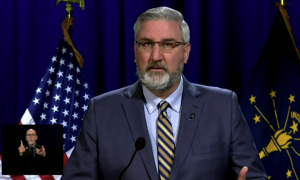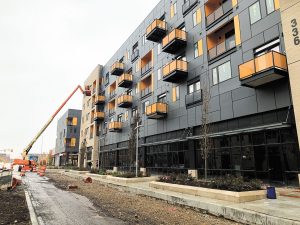Ed DeLaney: State budget leaves out higher education institutions
The supermajority was ill-prepared for this largesse. It has had only two ideas: Cut taxes and build the surplus. There were too many dollars for this.
The supermajority was ill-prepared for this largesse. It has had only two ideas: Cut taxes and build the surplus. There were too many dollars for this.
READI will encourage neighboring counties, cities and towns to partner and apply for grants of up to $50 million per region.
Population belongs on the list of Indiana’s most daunting long-term challenges, alongside education. Sure, our schools need to prepare more Hoosiers for success in the job market, but building our economy also takes more Hoosiers—period.
State lawmakers came through in big ways for business and manufacturing interests this year.

We must enact a plan not just around how to build and encourage industry to adapt and change, but also to maximize Indiana’s ability to compete over the next decade.
We’d like to see the governor be more specific about his proposal. He didn’t say, for example, how much money he wants to put behind it.
Normally, the governor gives the annual State of the State address before a joint session of the Indiana General Assembly inside the Indiana House chamber. But for safety reasons, Holcomb pre-recorded the speech without an audience.

IBJ looked at 30 of the more measurable commitments the governor has made over the last four years to see whether he’s lived up to what he promised and what Hoosiers can expect if he wins a second term.

We don’t often think of Unigov this way today, but in 1970, it was an early response to the challenge of regionalism. It created a regional government covering Marion County. At the time, this included most of the suburban development in the region.
Senate Bill 350 would create a regional development authority framework for central Indiana to allow local officials to work together on significant economic development initiatives. The pilot program would be in place for five years.
The area that includes the Fletcher Place neighborhood and the southeast corner of downtown is one of the hottest parts of Indianapolis, yet it’s included in a federal program designed to spur investments in poor neighborhoods.

State legislators should be receptive. It’s a reasonable follow-up to the 2015 Regional Cities Initiative, which split $126 million in tax amnesty funds among three regions.
Central Indiana elected officials want to create a formal organization that could combine regional resources to pursue transformational projects.
State and local leaders seem to agree that Indiana’s Regional Cities Initiative was successful—but don’t expect to see another round of funding for the program anytime soon, if ever.

The push to create a stronger sense of place in central Indiana could benefit the community at large, of course. But the biggest advocates of such efforts are business leaders concerned about attracting the best talent, and we love the idea that each one of them could take on a little of the responsibility for making the city a more attractive place to live and work.
Economic development officials from across the state presented a plan to the Fiscal Policy Committee that would establish a $100 million regional development tax credit and offer $150 million more for the Regional Cities Initiative.
While these cities definitely benefit from hosting all this regional economic activity, they must handle heavy rush-hour traffic and wear-and-tear on their streets, as well as provide public-safety services to accommodate the increased workday population.
We did little harm this year because we did so little.
We rarely look back and report on the consequences and costs of programs we au-thorize or administer.
Jodi Golden, the new executive director of Indiana’s Office of Community and Rural Affairs&mdash, is eager to see all the potential and assets that rural Indiana has to offer.
